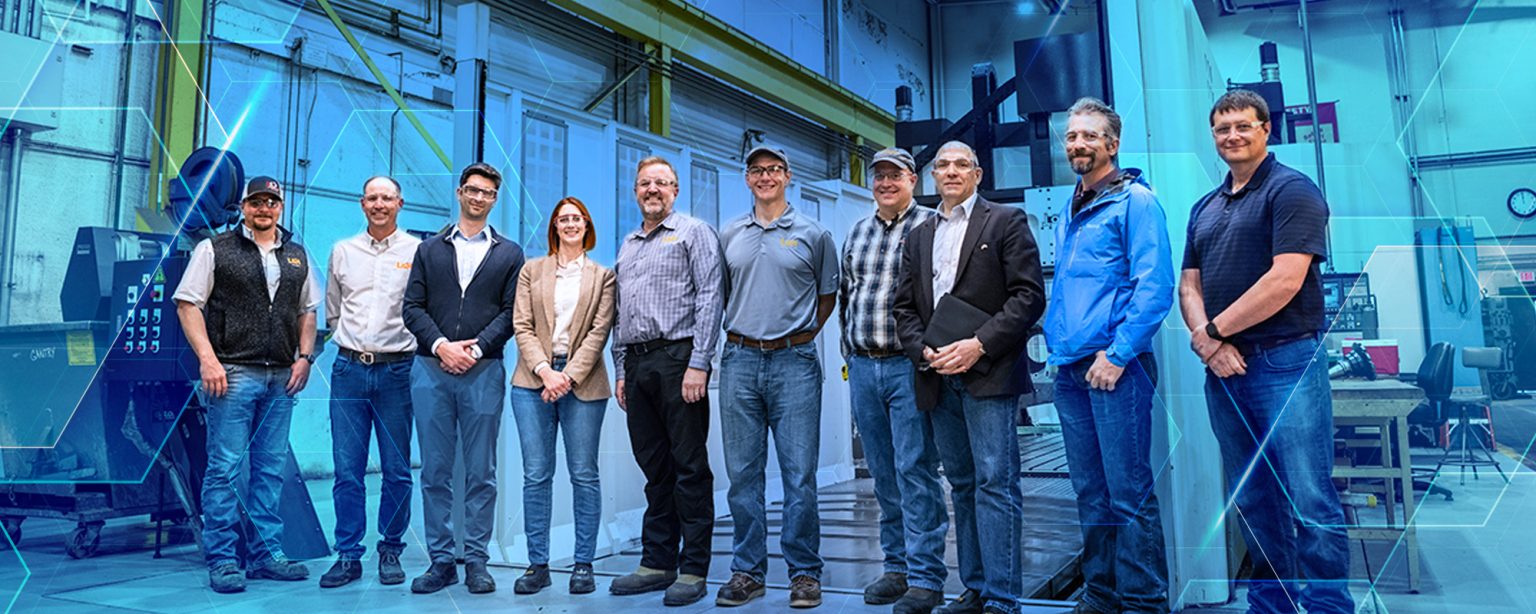An agreement between Idaho National Laboratory and Wyoming positions the state to continue as a leader in energy production and innovation.
The collaboration comes after TerraPower announced plans in 2021 to build its Natrium Power Plant in Kemmerer, Wyoming.
Wyoming’s elected officials, educators and business leaders have since reached out to experts at INL for advice to maximize the economic and human benefits of a nuclear energy industry in the state.

Those discussions culminated in a memorandum of understanding (MOU) signed on May 4, 2022. The laboratory and the state agreed to collaborate on developing capacity, insight and technology applications for advanced nuclear energy in Wyoming.
One year later, the collaboration is paying dividends.
“To date, this MOU has been instrumental in allowing INL to partner with Wyoming to build capacity at the University of Wyoming, advise the Wyoming Energy Authority and other agencies, and help the private sector understand where opportunities exist,” said John Wagner, director of Idaho National Laboratory. “We look forward to future successes, including the deployment of the first nuclear course at the University of Wyoming and partnerships with entrepreneurs, industry and academia.”
BEYOND ELECTRICITY
The collaboration doesn’t stop with building nuclear reactors to provide electricity for the grid.
Advanced nuclear energy will provide heat and electricity for energy-intense industries to create value-added products such as hydrogen and glass that diversify the state’s economy. To realize this vision, stakeholders would need to build industries, supply chains and educational programs.
Right now, that means connecting Wyoming stakeholders with investors, innovators, researchers and others with expertise and resources to help the state seize the moment.

“This isn’t as much technology innovation,” said Steven Aumeier, senior advisor for nuclear energy programs at INL. “This is innovative partnerships and innovative business frameworks to help transform Wyoming’s economy and help secure the nation’s energy future.”
EXPANDING BUSINESS OPPORTUNITIES
The agreement is helping Gillette-based L&H Industrial make connections within the nuclear energy industry that could expand its fabrication business. L&H specializes in big machines for the coal, natural gas and oil industries.
“I’ve been in my business 40 years, but this is the most exciting business opportunity I’ve ever seen,” said Mike Wandler, L&H president and co-owner.
Nuclear energy presents opportunities for businesses to diversify, and that means opportunities for Wyoming workers. L&H Industrial employs 150 workers at its location in Gillette. “Wyoming’s got a lot of great talent,” Wandler said. “They could easily pivot to support the nuclear energy industry.”
UNIVERSITY OF WYOMING
The agreement has also fostered opportunities with the University of Wyoming, including funding through the Nuclear Regulatory Commission for a new faculty member. INL and the university also developed an introduction to nuclear energy course for fall 2023.
“The class gives students access to the nuclear field,” said Tara Righetti, occidental chair in energy and environmental policies and co-director of the Nuclear Energy Research Center.
While the university likely won’t develop its own nuclear engineering program, the institution is heavily invested in energy development.
“INL has helped us translate our existing expertise to the advanced nuclear space,” Righetti said. “We’re exploring where Wyoming can make unique contributions rather than replicate research from other institutions.”
That includes advanced technologies for fossil fuels that could use nuclear electricity and heat to create carbon products.
Through an INL-led Emerging Energy Market Analysis collaboration, Righetti and her colleagues just finished a project that looks at synergies between microreactors and Wyoming’s raw materials industries. That includes hydrogen production and using nuclear to process the mineral trona into soda ash, which is used to make products like glass and laundry detergent. Wyoming also contains substantial uranium deposits, which could lead to opportunities within the nuclear fuels sector.
The collaboration is holistic, Righetti said. “It’s not, ‘Where can we put a reactor in Wyoming?’” she said. “It’s a comprehensive effort to create a vertically integrated nuclear industry that goes beyond power generation and upends the traditional resource extraction and export model. It’s also an opportunity to modernize some of the core industries in Wyoming and make them net-zero.”
A STRATEGIC FRAMEWORK FOR WYOMING
The agreement also helped the Wyoming Energy Authority develop a strategic framework that charts a path for nuclear energy industry in the state.
“The goal is to let the market decide,” said Glen Murrell, a former Wyoming Energy Authority executive director who now works as INL’s community and regional engagement director. “We’re trying to make the state sustainable and resilient to the energy transition. If we export energy and our customers want low-emissions energy, we need to provide that.”
With the strategic framework, the Wyoming Energy Authority brought together nuclear reactor suppliers, big industrial energy users such as chemicals manufacturers and Wyoming entrepreneurs.
“Often, experts assume that what is needed is new infrastructure like an industrial park,” said Marcio Paes-Barreto, director of industrial development for the Wyoming Energy Authority. “The more immediate need is developing know-how and building out the existing capabilities.”
Collaborations with nuclear experts can help develop the skill sets necessary for a nuclear industry. “When you weld something for coal or natural gas, you know how to serve that industry,” Paes-Barreto said. “How do you fill that knowledge gap? An advanced reactor developer understands that gap and can help develop the necessary skills.”

These collaborations also help Wyoming take a regional-to-global approach to transitioning its economy. Other states embracing advanced nuclear technologies such as Alaska and Utah will be vital partners.
“This MOU helped solidify a huge amount of high value, impactful action — real action — that places the people of Wyoming at the next frontier of a tremendous economic opportunity,” Aumeier said. “It’s about what doors nuclear energy opens up in terms of economic value, and that’s a national security imperative for our country as well.”
“Wyoming is wise enough to ask the question, ‘What doors can zero-emission, reliable heat and power open?’” Aumeier continued. “Boy, are they at the right place at the right time.”





